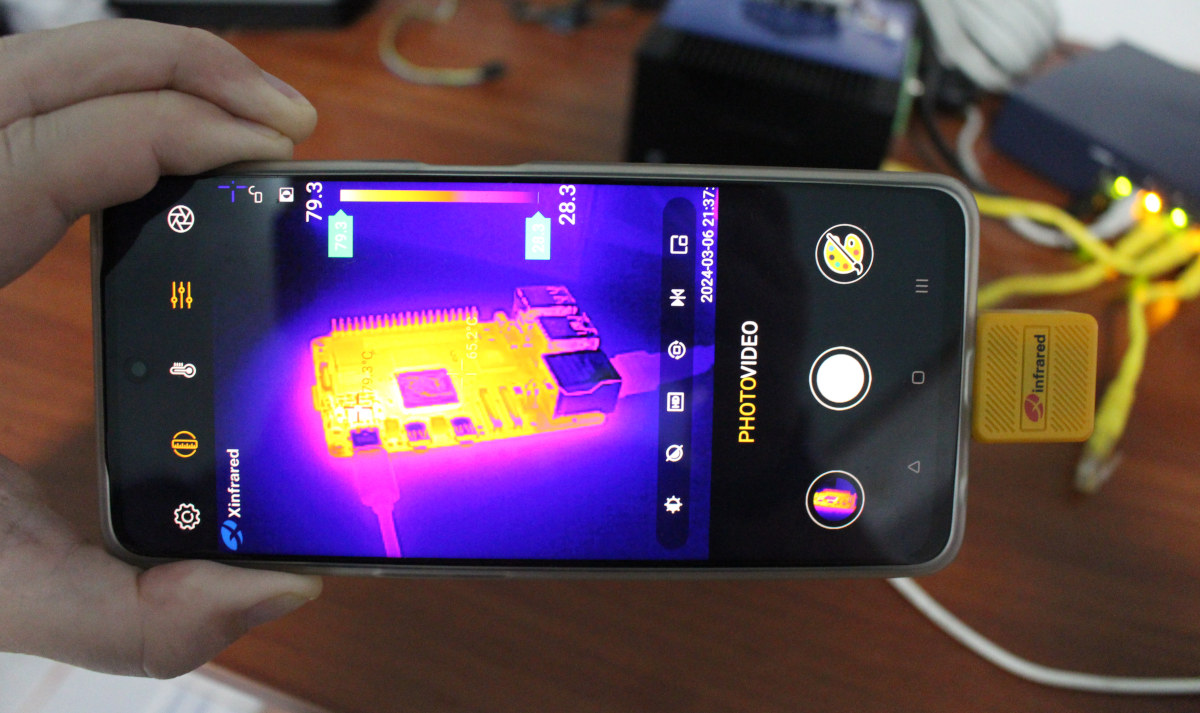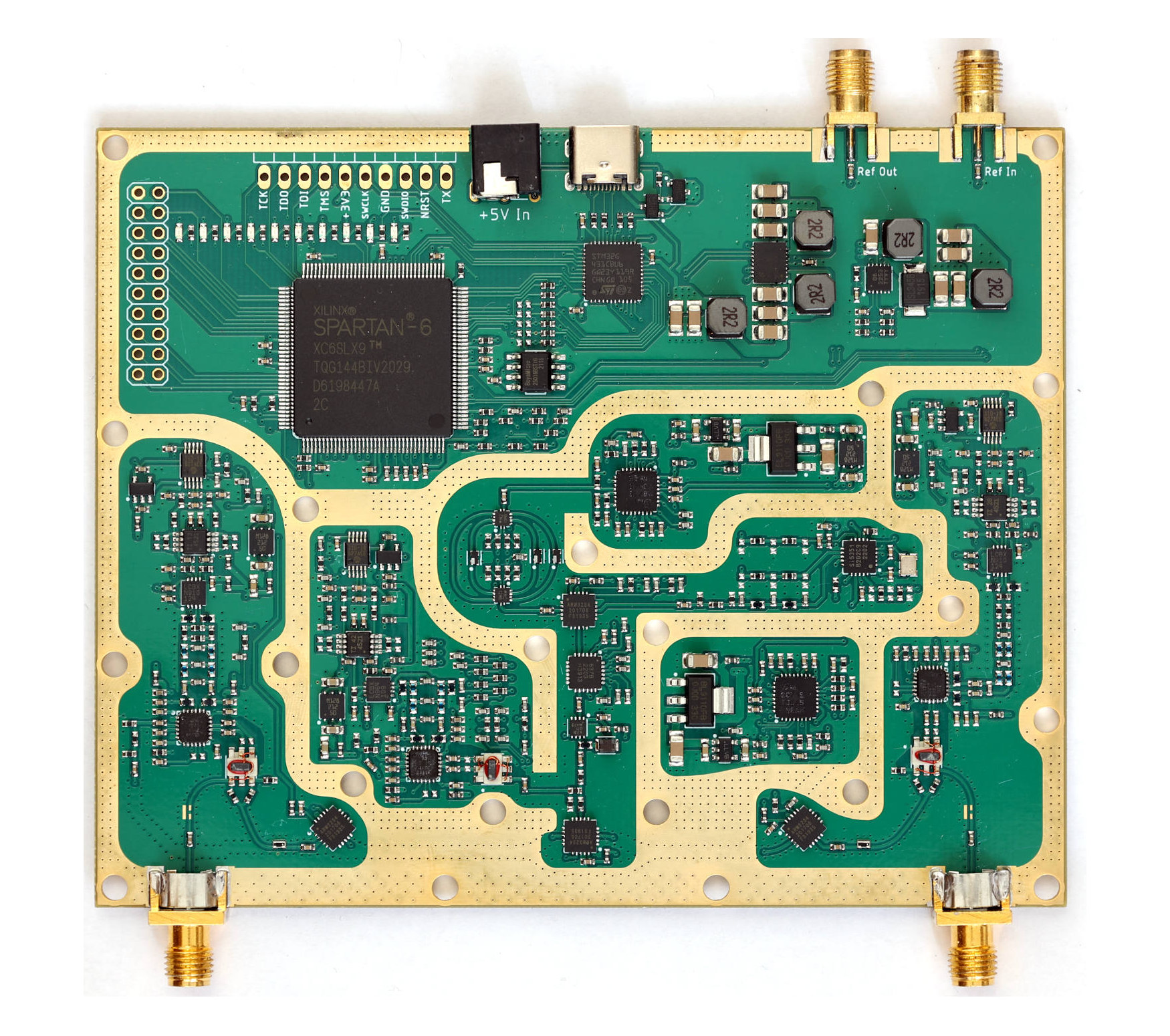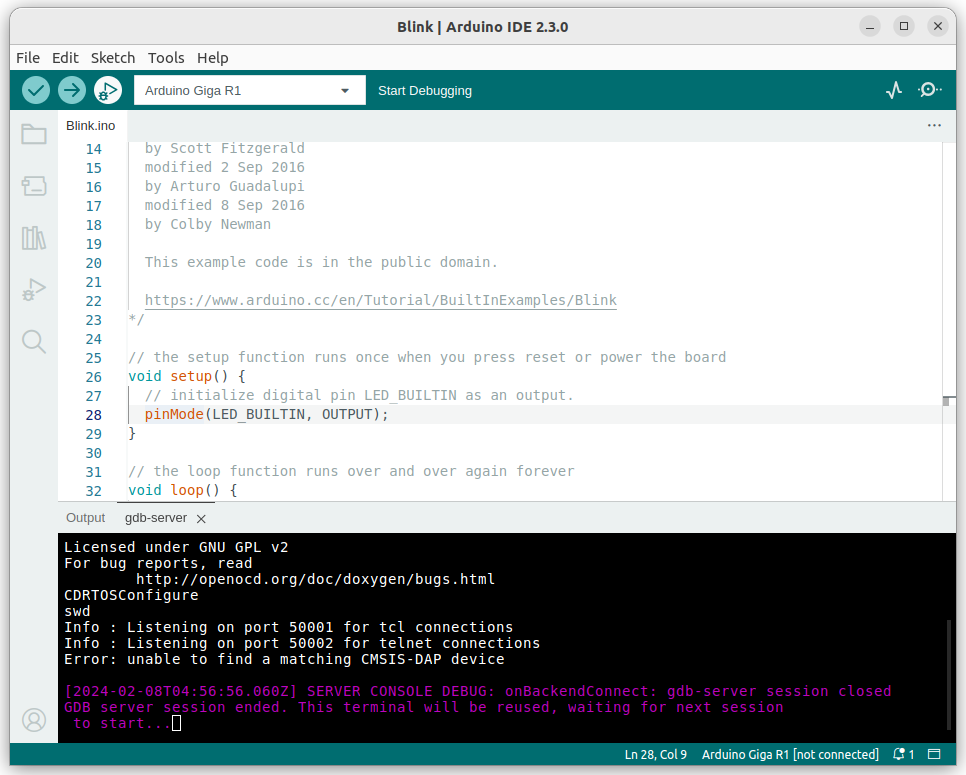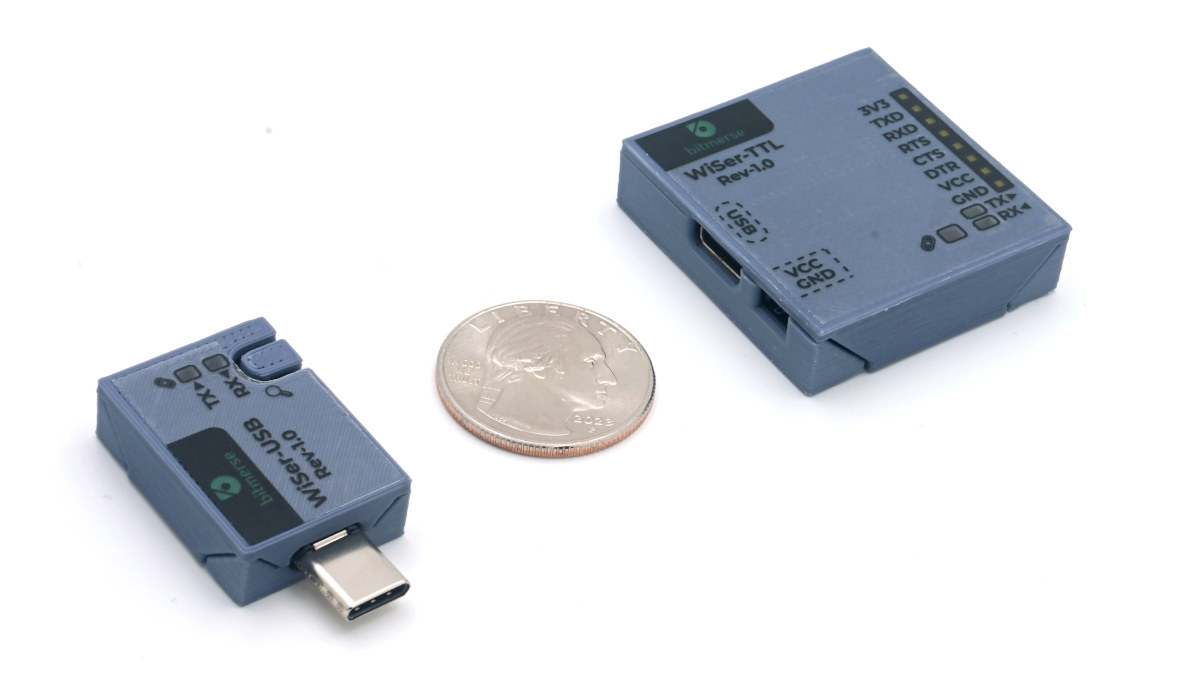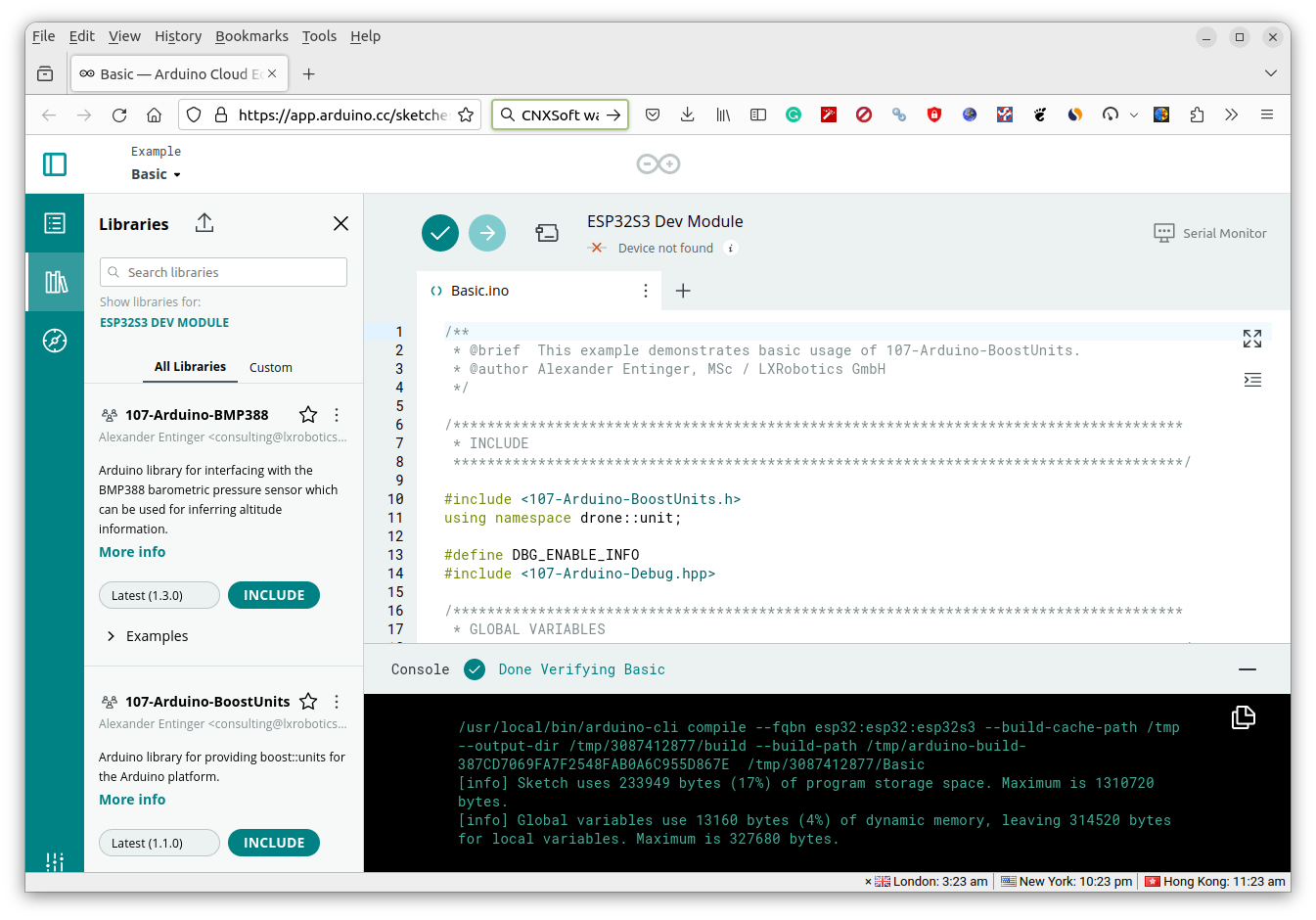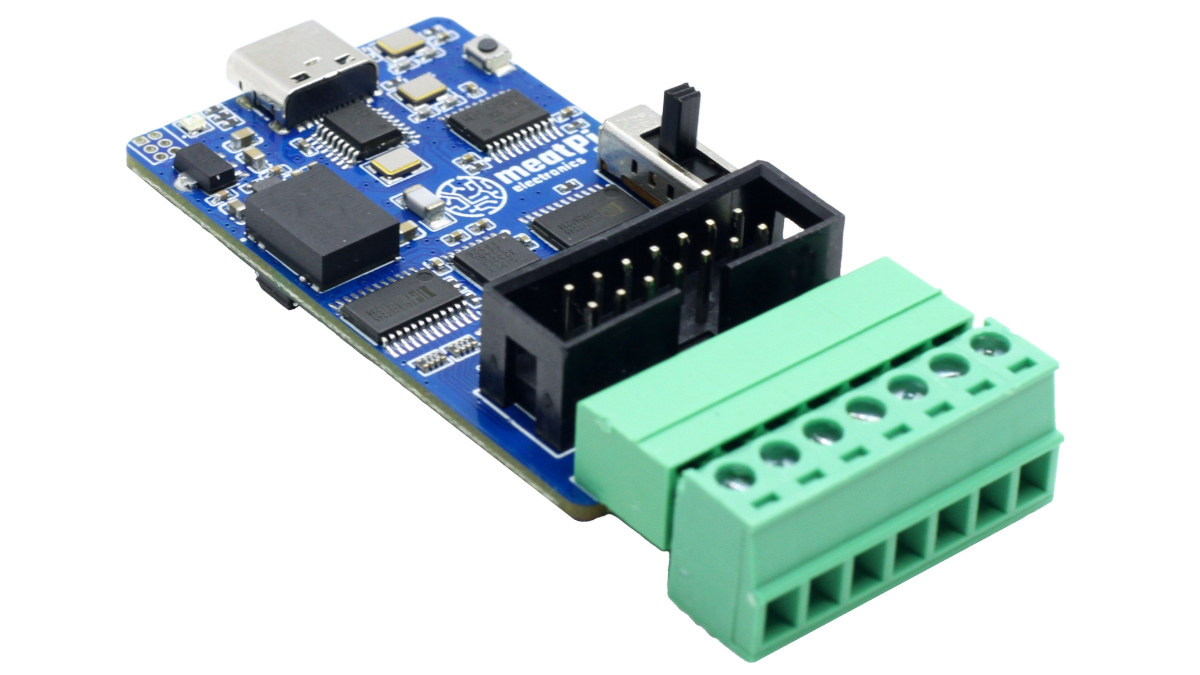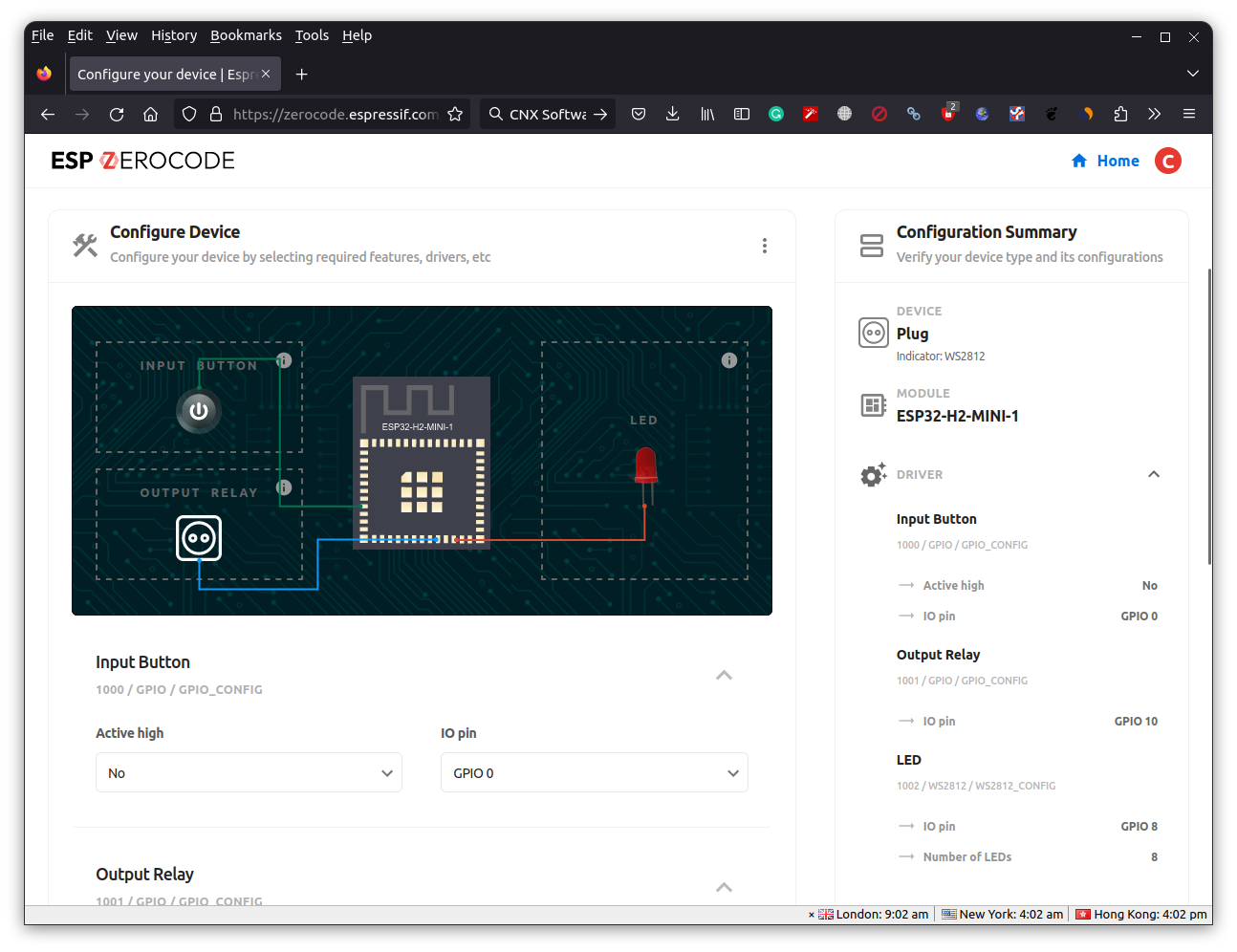Shortly after I wrote about the Mustool MT13S 2-in-1 thermal imager and multimeter, Xinfrared asked me if I wanted to review the Xtherm II TS2+ thermal imager for smartphones. They offer versions that work for Android or iOS smartphones, so the company sent me the Android version of the Xtherm II TS2+ for review. After listing the key features and specifications, I’ll go through an unboxing, and report my experience using the thermal imager with the OPPO A98 5G smartphone running Android 14. Xtherm II TS2+ specifications Minimum focus – 8mm Resolution – 256×192 Pixel Pitch – 12μm FOV – 44.9° x 33.4° Image Frame Rate – 25Hz NETD (Noise Equivalent Temperature Difference) – ≤40mK@25°C, F#1.0 MRTD (Minimum Resolvable Temperature Difference) – ≤500mK@25°C,F#1.0 Temperature Range Measurements- -20°C ~ +450°C with ±2°C or ±2% reading accuracy Operating – -20°C ~ +50°C Temperature Correction – Manual/automatic Power Consumption – <350mW Dimensions – […]
LibreVNA open-source USB vector network analyzer (VNA) works in the 100kHz to 6GHz range
Jan Käberich’s LibreVNA is an open-source hardware USB vector network analyzer (VNA) based on a Spartan-6 FPGA, an STM32 microcontroller, and RF circuitry with MAX2871 and Si5351C chips. The open-source VNA supports two channels and works in the 100kHz to 6GHz frequency range. Vector network analyzers are expensive pieces of electronic test equipment used to measure the magnitude and phase of high-frequency electrical networks costing several thousand dollars. They are commonly used in radio frequency (RF) and microwave engineering applications. Last year, we wrote that Pico Technology released PicoVNA 5 software for Linux, Raspberry Pi, and macOS instead of only providing a Windows program for their commercial PicoVNA devices. I thought it was already a good development even if it was closed-sourced, but LibreVNA goes all the way with an open-source hardware design with hardware design files, the FPGA code, STM32 firmware, and PC software (GUI) all open-source. LivreVNA hardware […]
$166 Mustool MT13S thermal imager doubles as multimeter
Mustool MT13S is a relatively inexpensive 2-in-1 thermal imager and multimeter with a 2.8-inch touchscreen display and an IR camera with a 192×192 resolution. Thermal cameras used to be quite expensive, but in recent years, we’ve seen cheaper models such as the HT-102 thermal camera for Android smartphones and M5Stack T-Lite Wi-Fi thermal camera, but those integrate fairly small 32×32 and 32×24 pixels IR arrays, The Mustool MT13S provides a higher resolution 192×192 thermal camera and doubles as a 10,000-count multimeter for about $166 plus shipping on Banggood or around $177 including shipping on Aliexpress. Mustool MT13S specifications: Thermal imaging Sensor – Uncooled focal plane Image capture frequency – 20Hz Thermal imaging resolution – 192 x 192 Display image resolution – 240 x 240 Field of view (FoV) – 50.0(H) × 50(V)/72.1(D) Emissivity – 0.1-0.99 is tunable and 0.95 is the default Temperature Range – -20°C to +550°C Accuracy – […]
Arduino IDE 2.3 released with the Debug feature now considered stable
Arduino IDE 2.3 has just been released with a range of bug fixes and improvements, but the main change is that the debug feature is not experimental anymore and is now considered stable. Bug fixes include addressing CVE-2023-4863 security flaw (See GitHub for related commits) and based on the wording used in the announcement it looks to be the only one… So the main news is that the Debug feature is now fully incorporated into the IDE. But what is it exactly? The new documentation website explains that Arduino CLI 0.9.0 and Arduino IDE 2.x support “sketch debugging” with openocd server. Arduino also explains it’s currently supported by Arduino boards based on the Mbed core including GIGA R1 WiFi, Portenta H7, Opta, Nano BLE, and Nano RP2040 Connect, and Renesas-based boards such as UNO R4 and Portenta C33 will get support very soon. The company also says they are working […]
Wiser wireless-to-serial kit eases the debugging and programming of embedded devices (Crowdfunding)
WiSer is a wireless-to-serial communication kit comprised of a USB dongle (WiSer-USB) and a USB TTL debug board (WiSer-TTL) – both built around an ESP32-S2 microcontroller – that allows users to establish a P2P wireless connection between a host computer and a development board or sensor. It works like a typical USB to TTL debug board except it operates over WiFi, and it’s especially useful to debug code, update firmware, log data, or transfer files without a USB cable or even a Wi-Fi router since the connection to peer-to-peer. It looks especially useful when the host and DUT are too far apart, and my review samples are often on another table around 1.5m from the nearest USB port of my laptop, so I could see some use for it myself… WiSer specifications: Wireless SoC – ESP32-S2 Wi-Fi (and Bluetooth) microcontroller USB – 1x USB Type-C port providing a virtual serial […]
Arduino Cloud Editor update brings the classic Arduino IDE experience to your web browser
Arduino has updated the Arduino Cloud Editor – which started as Arduino Create several years ago – to bring the web-based code editor closer to the appearance and functionalities of the “classic” Arduino 2.0 IDE. Arduino says the Cloud Editor simplifies the getting started process without having to go through the setups or maintenance required by the Arduino IDE installed on your computer and you can access your sketches easily from the cloud wherever you are. Considering the Arduino Cloud Editor has been around for a few years what has changed exactly? First, the Cloud Editor and the Arduino IDE now have a unified design (sort of), although the way the company frames it is a bit abstract: Traditionally, Arduino Cloud had two separate editors: an embedded simple one and the full editor. Users have long awaited a unified editor that gets the best of each one. The new Cloud […]
Ollie v2 USB to UART/CAN/RS485/RS232 converter gets USB-C port, plastic enclosure, and more (Crowdfunding)
Ollie v2 is an improved version of the Ollie USB to isolated UART, CAN Bus, RS232, and RS485 converter that gains a USB-C port, a plastic case, the ability to set the voltage from the target board, and various other minor improvements. Like the first version, the Ollie v2 is a portable tool designed for hackers and field engineers that allows them to work with a single device instead of a bunch of USB converters, each handling a single protocol, and isolation makes sure the host, such as a laptop, is protected from high voltages. Ollie V2 specifications: Serial chip – WCH CH344 quad-serial port chip (instead of XR21V1414 in the first design) Host interface – USB Type-C port Isolated interfaces (all with ESD protection) 2x UART ports up to 6 Mbps with 1.8/3.3/5 V or target voltage levels (set by slide switch) CAN 2.0A/B up to 1 Mbps bus […]
ESP ZeroCode web application creates custom Matter-certifiable firmware for ESP32 targets
Low-code/no-code platforms keep on coming and Espressif Systems ESP ZeroCode adds to the list. It is a web application designed to prepare Matter-certifiable firmware for ESP32 devices as per the user’s requirements. The website is supposed to streamline the product development where the firmware is developed for you (no need for those costly software/firmware engineers!) and future OTA updates are also guaranteed for a period of three years. It’s a bit similar to the Tuya platform, but for ESP32 devkits, modules, and/or rebranded products with Matter-certified firmware. So I went to the website to give it a try in Firefox in Ubuntu. After registration and login, we are given three options: Your products, Create a new product, and Rebrand a Certified Product I went with the second option and named by new product “CNX Software Gizmo”. In the next step, we can select the device type between socket, plug, light, […]


